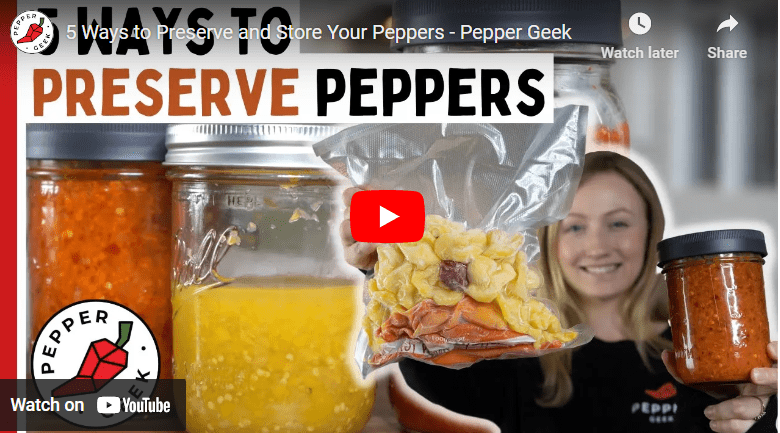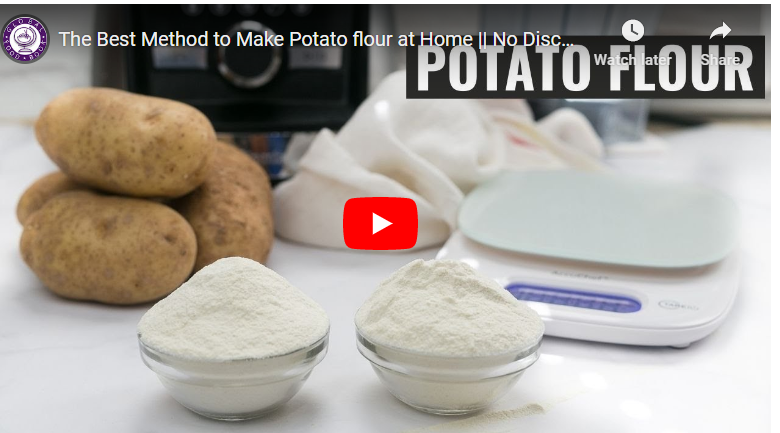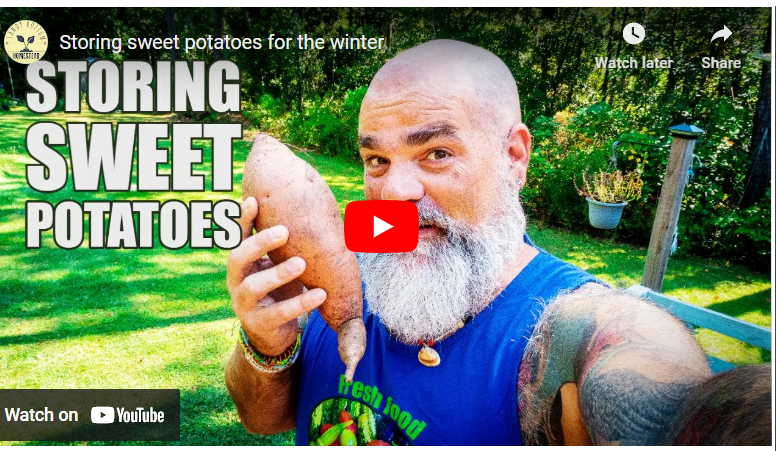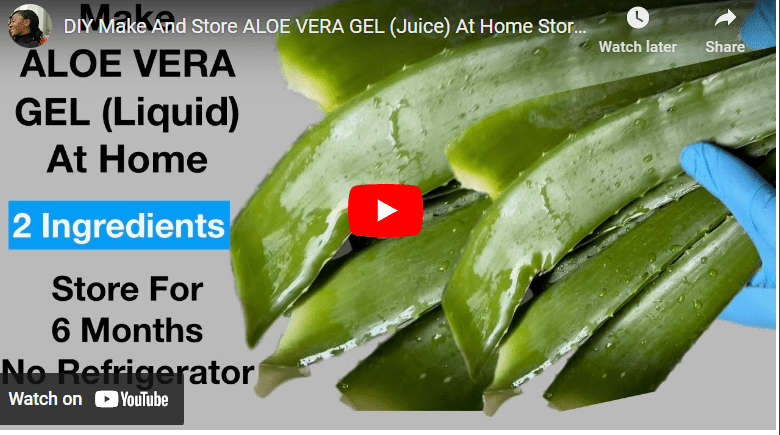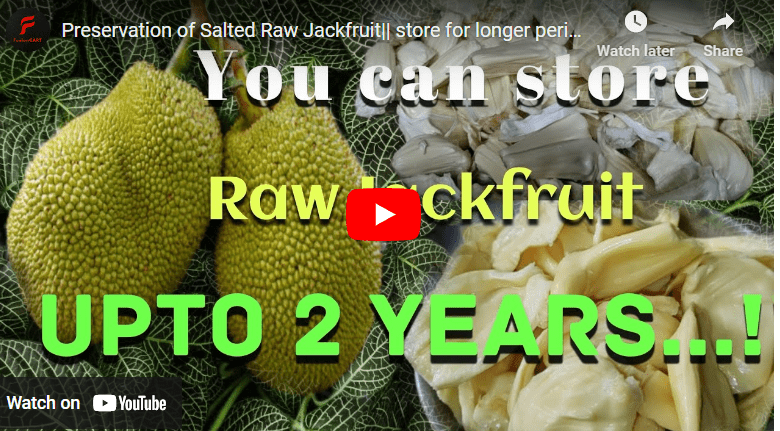Peppers are a staple ingredient in many dishes, adding flavor, color, and heat to a variety of cuisines. While fresh peppers are readily available in grocery stores and farmer’s markets, they have a relatively short shelf life and can spoil quickly if not properly stored.
Fortunately, there are several methods for preserving fresh peppers that can extend their shelf life by months or even years. These methods include drying, freezing, and pickling, each of which offers unique benefits and drawbacks.
Preserving fresh pepper for long-time storage can be done easily with the right tools and methods. First, clean the pepper and remove any dirt or debris. Then, dry the pepper completely using a paper towel. Once dry, cut the pepper into small pieces and place them in an air-tight container or bag. Store the container in a cool, dry location, such as the refrigerator or a cool pantry. This will help preserve the pepper’s freshness and flavor for up to several months.
How To Preserve Fresh Pepper For Long-Time Storage
It is important to learn the methods of preserving your fresh peppers for a long time storage. This will help you avoid spoilage and wastage.
Types of Fresh Pepper
When it comes to preserving fresh peppers, it’s important to know the specific type of pepper you’re dealing with as different types of peppers require different preservation techniques. There are many different types of fresh peppers available, each with their unique flavors, heat levels, and textures.
Read Also: How To Preserve Aloe Vera For Long-Time Storage
1. Bell Peppers
there are bell peppers, which are mild and come in a variety of colors, such as red, yellow, and green. Bell peppers are great for roasting, sautéing, and stuffing. They can be preserved by freezing, drying, or pickling.
2. jalapeños
There are jalapeños, which are medium heat peppers that are commonly used in Mexican and Southwestern cuisine. Jalapeños can be preserved by freezing or pickling.
3. Habaneros
There are habaneros, which are extremely hot peppers with a fruity flavor. Habaneros can be preserved by drying, which intensifies their heat and flavor.
Read Also: How To Preserve Apple for Long-Time Storage
4. Serranos
There are serranos, which are similar to jalapeños but are slightly hotter and have a more herbaceous flavor. Serranos can be preserved by freezing or pickling.
5. Thai chilies
There are Thai chilies, which are very hot and commonly used in Southeast Asian cuisine. Thai chilies can be preserved by drying or pickling.
Step 1. Preparing Fresh Pepper for Preservation
Before you start preserving fresh peppers, it’s important to properly prepare them. Here are some tips for preparing fresh peppers for preservation:
Step 1: Wash the peppers
Wash the peppers thoroughly under running water to remove any dirt, debris, or pesticides.
Read Also: How To Preserve Avocado For Long Time Storage
Step 2: Cut the peppers
Cut the peppers into the desired size and shape for the preservation method you’ve chosen. For example, if you’re planning on drying the peppers, you’ll want to cut them into thin slices or small pieces.
Step 3: Remove the stems and seeds
Remove the stems and seeds from the peppers as they can add bitterness to the preserved peppers.
Note that when working with hot peppers, it’s important to wear gloves to protect your skin from irritation or burns. Also, when handling hot peppers, be sure to avoid touching your face or eyes. If you do touch your face or eyes, wash your hands immediately.
Read Also: How To Preserve Beans For Long Time Storage
Step 2: Preservation of Fresh Pepper
There are different methods of preserving fresh pepper. They include:
#1. Drying Methods of Preservation
Drying is a popular method of preserving fresh peppers as it intensifies their flavor and heat. Here’s a step-by-step guide on how to dry fresh peppers:
Step 1: Wash and Prepare the Peppers
Wash the peppers thoroughly under running water, remove the stems and seeds, and cut them into thin slices or small pieces.
Read Also: How To Preserve Cabbage For Long Storage
Step 2: Dry the Peppers
There are two main ways to dry peppers – using an oven or a dehydrator, and sun drying.
Oven or a Dehydrator
If using an oven, preheat it to the lowest possible temperature, arrange the peppers in a single layer on a baking sheet, and place the baking sheet in the oven. Prop open the oven door slightly to allow moisture to escape.
Read Also: How to Preserve Tomatoes for Long Time Storage
Check the peppers every 30 minutes and rotate the baking sheet to ensure even drying. If using a dehydrator, arrange the peppers in a single layer on the dehydrator trays and follow the manufacturer’s instructions for drying times.
Sun-Drying
To sun dry fresh peppers, begin by washing and preparing them, removing stems and seeds and slicing them into small pieces.
Lay the prepared peppers out in a single layer on a clean and dry surface in direct sunlight, covering them with a thin mesh or cheesecloth.
Regularly check and turn the peppers, and bring them indoors at night to prevent moisture. Once completely dry, store them in an airtight container in a cool, dark, and dry place for up to a year.
Read Also: How To Preserve Carrot For Long Time Storage
Step 3: Check for Dryness
The peppers are done drying when they are crispy and no longer pliable. Depending on the thickness of the peppers and the drying method used, this can take anywhere from a few hours to a few days.
Step 4: Store the Dried Peppers
Once the peppers are completely dry, store them in an airtight container in a cool, dark, and dry place. Dried peppers can be stored for up to a year.
#2. Freezing Methods of Preservation
Freezing is another common method of preserving fresh peppers that can be done easily at home. Here’s a step-by-step guide on how to freeze fresh peppers:
Step 1: Wash And Prepare The Peppers
Wash the peppers thoroughly under running water, remove the stems and seeds, and cut them into desired sizes.
Read Also: How to Preserve Cocoa for Long Time Storage
Step 4: Blanch The Peppers
Bring a pot of water to a boil and add the peppers to the boiling water for about 2 minutes. This process helps to preserve the peppers’ texture and color.
Step 3: Cool The Peppers
After blanching, remove the peppers from the boiling water and place them in a bowl of ice water to cool for about 2 minutes. This step stops the cooking process and helps to retain the peppers’ nutrients.
Step 4: Drain The Peppers
Drain the peppers using a colander to remove any excess water.
Step 5: Arrange The Peppers
Place the drained peppers on a baking sheet in a single layer and freeze for about 1-2 hours.
Step 6: Transfer The Peppers
Once frozen, transfer the peppers to a freezer-safe bag or airtight container. Make sure to mark the container with the contents and the date.
Read Also: How To Preserve Coconut For Long-Time Storage
#3. Pickling Method of Preservation
Pickling is another popular method of preserving fresh peppers, and it can give your peppers a tangy, flavorful twist. Here’s a step-by-step guide on how to pickle fresh peppers:
Step 1: Wash And Prepare The Peppers
Wash the peppers thoroughly under running water, remove the stems and seeds, and cut them into desired sizes.
Step 2: Prepare The Pickling Solution
In a large saucepan, combine water, vinegar, sugar, salt, and any desired spices. Bring the mixture to a boil, stirring occasionally until the sugar and salt are dissolved.
Step 3: Pack The Peppers
Pack the prepared peppers tightly into clean, sterilized jars. Be sure to leave about 1/2 inch of headspace at the top of each jar.
Step 4: Add The Pickling Solution
Pour the hot pickling solution over the peppers, filling each jar to the top. Use a knife or a spatula to remove any air bubbles.
Read Also: How To Preserve Cucumber For Longer Storage
Step 5: Seal The Jars
Wipe the rim of each jar with a clean cloth, place the lids on top, and tighten the rings securely.
Step 6: Store The Jars
Store the jars in a cool, dark place for at least 2 weeks to allow the peppers to fully absorb the flavors. Pickled peppers can be stored for up to a year.
Tips for Long-Term Storage
To ensure the long-term storage of your freshly preserved peppers, it’s essential to follow some basic tips. Here are some tips that can help you keep your preserved peppers fresh for a long time:
1. Choose The Right Containers
Use airtight containers such as mason jars, ziplock bags, or vacuum-sealed bags to store your preserved peppers. This will help prevent moisture and air from getting inside the containers and spoiling the peppers.
2. Store In A Cool, Dark, And Dry Place
Store your preserved peppers in a cool, dark, and dry place such as a pantry, cupboard, or cellar. Avoid storing them in areas where they may be exposed to sunlight, humidity, or heat.
Read Also: How To Preserve Flowers
3. Label and Date The Containers
Make sure to label and date the containers with the type of pepper and the date of preservation. This will help you keep track of their shelf life and ensure that you use the oldest peppers first.
4. Use Food-Grade Desiccants
Place food-grade desiccants such as silica gel packs or oxygen absorbers in the containers with your preserved peppers to absorb any remaining moisture and prevent spoilage.
Advantages of Preserving Fresh Pepper
There are many advantages to preserving fresh peppers. One of the main benefits is that you can enjoy fresh peppers all year round, even when they are out of season.
Preserving fresh peppers can also help to reduce food waste, as it allows you to save excess peppers that you may not be able to use before they spoil.
Additionally, preserving fresh peppers allows you to create unique and flavorful blends by combining different varieties and adding spices and herbs.
Disadvantages of Preserving Fresh Pepper
Despite the many advantages of preserving fresh peppers, there are also some drawbacks to be aware of.
Read Also: How To Preserve Flowers
One of the main disadvantages is that the preservation process can alter the taste and texture of the peppers. For example, dried peppers may have a slightly different flavor than fresh peppers, and pickled peppers may be softer and less crunchy.
Additionally, some preservation methods such as freezing may cause the peppers to lose some of their nutritional value.
Factors that Affect Preserving Fresh Pepper
The success of preserving fresh peppers depends on various factors, including the type of pepper, the preservation method, and the storage conditions.
Some types of peppers may be more suitable for certain preservation methods than others, and some methods may work better in specific environments.
For example, freezing may not be ideal for peppers with high water content, and pickling may require specific vinegar and salt ratios to prevent spoilage.
The storage conditions, such as temperature, humidity, and light exposure, can also affect the quality and shelf life of the preserved peppers.
It’s essential to choose the right preservation method for your peppers and store them in optimal conditions to ensure their freshness and flavor.
How To Store Bell Peppers Long Term
To store bell peppers long-term, it’s best to choose peppers that are firm and have no soft spots or blemishes. You can store them in a cool, dry place, such as a pantry or basement, for up to two weeks.
Be sure to keep them away from direct sunlight and moisture, as this can cause them to spoil faster. If you want to extend their shelf life even further, you can preserve them using one of the methods mentioned earlier, such as drying or pickling.
How To Store Bell Peppers In The Freezer
To store bell peppers in the freezer, start by washing and drying the peppers thoroughly. Then, remove the stems and seeds and cut them into slices or small pieces.
Arrange the pieces in a single layer on a baking sheet and place them in the freezer for a few hours. Once they are frozen, transfer them to an airtight container or a freezer bag and store them in the freezer for up to six months.
How To Keep Cut Bell Peppers Fresh
To keep cut bell peppers fresh, store them in an airtight container or a plastic bag in the refrigerator. Be sure to remove any seeds or membranes before storing them, as these can cause the peppers to spoil faster. Cut bell peppers will typically last for up to five days in the refrigerator.
How To Store Bell Peppers In Mason Jars
To store bell peppers in Mason jars, start by washing and drying the peppers thoroughly. Then, remove the stems and seeds and cut them into slices or small pieces.
Pack the pieces tightly into sterilized Mason jars and add a brine made of vinegar, water, and salt. Seal the jars and store them in a cool, dry place. Pickled bell peppers can last for up to a year in the pantry.
How Long Will Bell Peppers Last Unrefrigerated
Bell peppers will typically last for up to two weeks when stored in a cool, dry place such as a pantry. However, their shelf life can be affected by factors such as temperature, humidity, and exposure to sunlight. It’s best to store them in a cool, dry place away from direct sunlight and moisture to extend their shelf life.
How Long Do Peppers Last After Picking
The shelf life of peppers after picking depends on various factors, including the type of pepper and the storage conditions.
Generally, bell peppers can last for up to two weeks after picking when stored in a cool, dry place.
Other types of peppers, such as jalapenos or habaneros, may have a shorter shelf life and may need to be preserved or used immediately.
It’s essential to store peppers properly to extend their shelf life and maintain their freshness and flavor.
Conclusion
Preserving fresh pepper for long-term storage is an easy and cost-effective way to ensure that you always have this versatile ingredient on hand. With the right preparation and storage techniques, you can enjoy the flavor, color, and heat of fresh peppers all year long. So why not try your hand at preserving fresh peppers today and discover the many delicious ways you can use them in your cooking.
